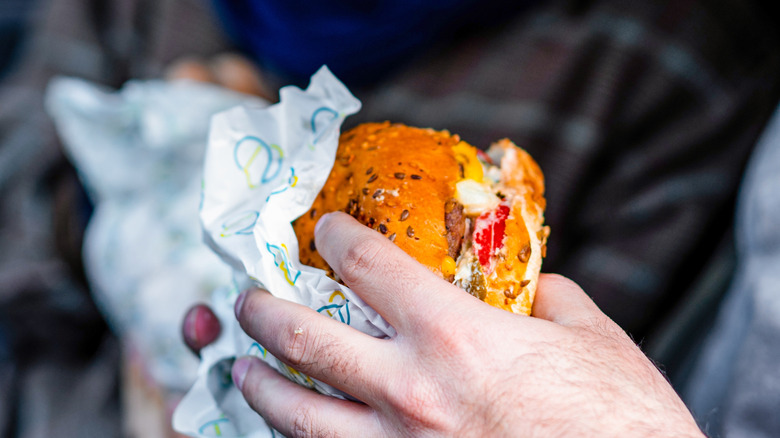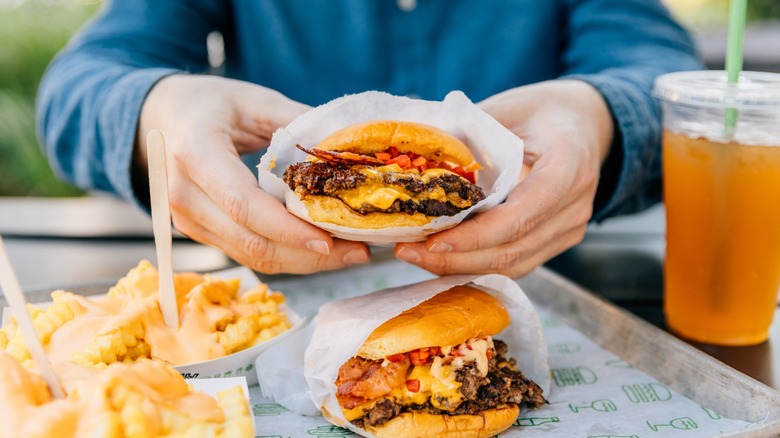Fast Casual Vs Fast Food: Here's The Actual Difference
"Fast food" as opposed to "fast casual" — when it comes to a lower-priced eatery, what is the difference, exactly? To a certain extent, it depends on who you ask. Despite the deceptive names, fast casual is, in theory, a step up from fast food. Fast food might feature gimmicks like a mascot and toys in kids' meals, but fast casual is a little more focused on ambiance and fresher, "better" food than fast food. Many fast food restaurants have drive-thrus, and the public perception is that fast food is cheap in both price and quality. But hang onto your hats, because these definitions aren't cut-and-dried.
For example, fast food doesn't have to equal trash food. Celebrity chefs like Ina Garten and the late Anthony Bourdain have publicly expressed their love for West Coast fast food cult sensation In-N-Out, which would seem to indicate that the grub is something special. On the other hand, Panera Bread does not make its soups fresh and, per employee reports, actually has the menu item shipped in frozen. Another interesting fact about Panera? Some locations have a drive-thru ... yet, Panera is inarguably a fast casual eatery and not fast food. However, by McDonald's own admission, not all its stores have drive-thrus ... and surely we can agree that it doesn't get more iconically "fast food" than the Golden Arches. What, then, actually separates fast food from fast casual? It seems that price and speed are the two big determining factors in making that distinction.
Fast is the key word here
If you place a mobile order at Chipotle or Panera, you can expect that it will take a few minutes for employees to get it ready. Soup or bowl components have to be ladled, sandwiches have to be assembled by hand, and there is at least a minimal focus on presentation. Compare that to the food assembly process at Burger King or Wendy's, where burgers are slapped together assembly-line style, bagged, and passed to you through a window in record time. Time is of the essence in fast food. Even the booths in the dining room are often made of hard plastic so that they can be speedily wiped down between customers. Getting food quickly and cheaply is the goal. Notice that many fast food chains have value menus — they have identified their customer priorities, which are prompt, inexpensive meals.
On the other hand, you will pay a little more for your food at a fast casual hub like Shake Shack, Panda Express, or Potbelly. In exchange, you will likely have more options, some of which you may consider to be healthier or more wholesome than those of their fast food brethren (although this isn't a guarantee). In contrast, you may also be more motivated to linger in the dining room, having an experience closer to a sit-down meal. Ultimately, though, it's important to remember that the line between fast food and fast casual is a bit blurry, but most patrons know the difference when they experience it.

